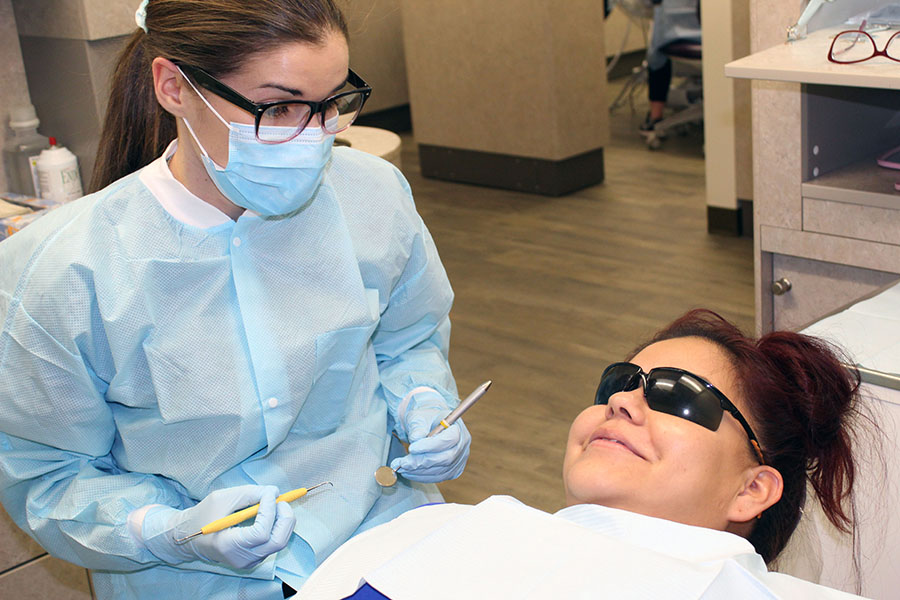
Translating oral health to serve Indigenous patients, communities
USask researchers work with communities to co-create dental education resources in Cree, Dene languages
Creating plain language resources in Cree and Dene to make oral health information more accessible is the goal of University of Saskatchewan College of Dentistry researchers and Indigenous communities.
A project led by assistant professors Trish Goulet and Amrinderbir Singh will build on established relationships with communities served by the college’s outreach dental clinics.
“Through consultation with community members and organizations we will co-create oral health resources based on research findings and Indigenous ways of knowing,” Goulet said. “The specific topics of these culturally appropriate educational resources will be decided with the community, based on what they believe to be their most pressing oral health educational needs.”
The project, which is funded by a $10,000 Truth and Action Grant from the Saskatchewan Health Research Foundation (SHRF), responds to Truth and Reconciliation Commission Calls to Action related to educational resources and language as well as health and health outcomes.
“Our project supports reconciliation through the consultative and collaborative activities that are the basis of our approach,” said Goulet, whose research includes a focus on Indigenous cultural safety training. “It is not possible to support the Calls to Action in respect to language, learning materials, and health outcomes, unless the consultation and resource development is grounded in co-creation.”
The effort will see researchers work with existing contacts in the communities to facilitate engagement and support during information gathering and the resource development process.
“Co-creating these resources in conjunction with stakeholders in the locales where the college has outreach clinics will strengthen our relationships with community members and forge new connections via shared networks,” said Singh, the college’s director of Inclusive Community Care.
“Engaging and consulting with communities in developing these educational and awareness resources helps ensure they are culturally safe, holistic and integrated.”
The resources will promote current, evidence-based information about common procedures and/or after-care instructions and will be available through the college’s network of outreach clinics. Indigenous community members along with oral health/dental service providers will be able to use and benefit from the information.
For example, a predetermined topic is creation of a plain language summary in Cree and Dene of the Non-Insured Health Benefits (NIHB) program administered by Indigenous Services Canada. The goal is to help patients better understand the program and available treatment options, so they are more comfortable in making oral health decisions. That would alleviate a barrier for patients in accessing oral health coverage available through the NIHB program.
“Indigenous patients seeking oral health care face a barrier due to the technical jargon that hinders a layperson’s ability to understand eligibility for certain procedures based on insurance program policies,” Singh said. “Similarly, patients have reported a lack of clarity around important after-care instructions such as at-home care that increase the likelihood of positive treatment outcomes.”
A planned reflective evaluation will involve consultation with patients, clinic staff, community members, and research team members to gather informal feedback about the process employed in the initiative and the resulting resources in Cree and Dene. It will gather impressions of feasibility for general uptake, upscaling and success in improving oral health outcomes for Indigenous populations in Saskatchewan.
“There is significant potential for this project to have a positive impact on the health outcomes of Indigenous peoples in Saskatchewan and Canada,” Goulet said. “Having the existing outreach clinic infrastructure and collaborative relationships in place to support the uptake and delivery positions us for success. There is also significant potential for this project to strategically reach a much wider audience in additional communities across Canada.”

